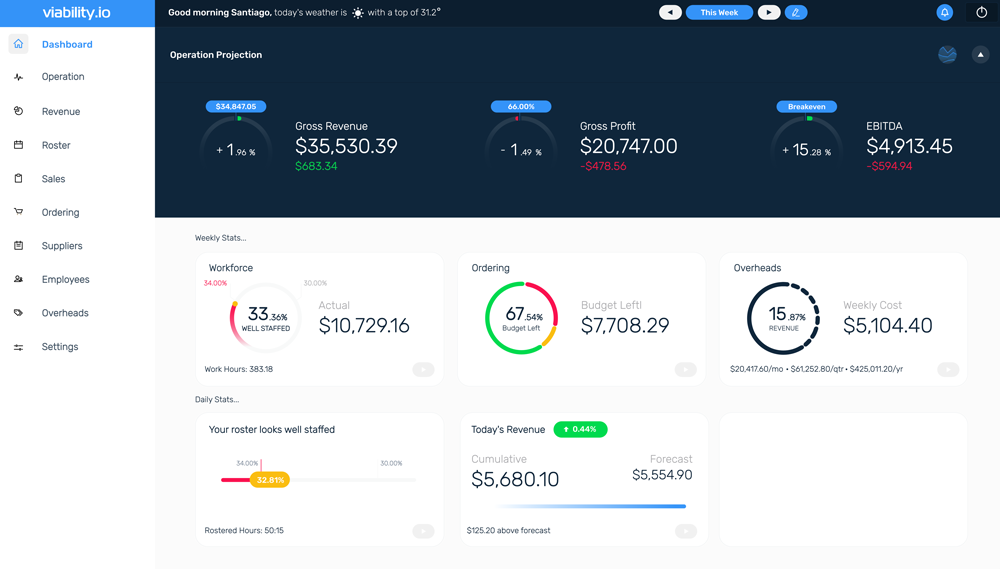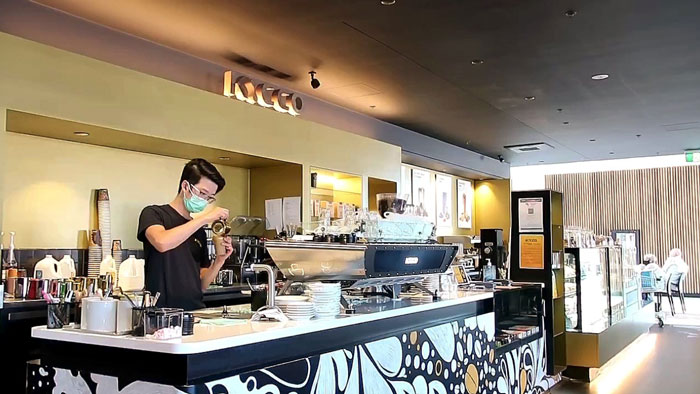Restaurateurs and cafe owners suffered badly under Covid restrictions – but like other industries, being cornered into future-focused tech update has served them well for recovery.
As the 2 year anniversary of Covid craziness comes and goes, we’re looking back on the things that have kept us kicking.
The last years of lockdowns, restrictions and seemingly never-ending house arrests in some cities were something most people hadn’t imagined, much less prepared for.
As foodservice operators, we definitely felt the massiveness of the challenge.
It’s no secret the effect of Covid on the restaurant industry has been severe. Same goes for Covid effects on cafes. And bars and nightclubs have copped it even harder. Density requirements, statewide lockdowns layered one on top of the other, restrictions against standing and drinking, drinking and dancing, eating on-premises, and in some cases even take away operations … all the very reasons for which this industry exists. Not to mention the discouraging risk for potential customers who until recently were understandably hesitant to leave the house.
These measures were (of course) vital to help us stop the carnage that’s been seen worldwide. But it’s not hard to imagine – or to see – that the effects of Covid on restaurants, cafes, bars, and other food and beverage venues has been severe.
In many cases, the pandemic has been fatal for those venues. Many of our local favourites and too many of our friends and peers have been forced to make the heartbreaking decision: to be one of the restaurant closures due to Covid.
Even with rent relief and government help last year, simply achieving a turnover high enough to survive has been difficult. For some, it’s been fatal. How many restaurants have closed due to Covid? How many cafe closures in the last two years? While some can survive, others can’t make ends meet.
The restaurant industry was already doing it tough
We all know it’s hard to come out on top when you start on the back foot.
The past decade was already pretty rough for business in hospitality and foodservice. Our sector has been seeing rising costs and slimming profit margins for many years, and now has been trampled by Covid-19. So what’s the Covid cure for bars, restaurants, cafes and other foodservice venues?
Partly, it’s the same cure we could list for the rest of society: a virus under control. But frankly, for many food businesses, that will come much too late.
But there’s something businesses are doing today to help change their own fate.
Like every other industry, foodservice and hospitality can be hauled out of the sinking sand by good technology. Venues were in many cases forced to adopt new tech in the pandemic, just as offices were.
Tech can sometimes be a double edged sword
We’ve got a lot of tech solutions in this industry.
POS is kind of old news now, having been around as hardware for decades. Newer, cloud-based solutions are certainly making our lives easier.
Delivery apps in Covid times have helped many businesses retain turnover and keep their cashflow happening. Unfortunately, that doesn’t mean anything for their profit margin. You can be running at a decent turnover and still make little or no profit. Or worse, losses. When it comes to delivery apps in particular, high commissions of up to 35% on food orders can see profit disappear before the meal is even out the door.
The rise of rostering apps has been amazing for our efficiencies, making scheduling and staff management easier and faster. But these roster-specific solutions often don’t have the depth of data we need to make informed staffing decisions.
Accounting software has changed the game for accountants, no question. But the truth is it’s built for office use, and doesn’t understand the hands-on operations of a venue. It’s no good finding out our financial position after the fact… we need to know in the moment so we can make profitable decisions on the fly.
Ordering software makes ordering simpler, but gives the upper hand to the suppliers who manage it.
Price watching software helps us understand price creeps and identify issues with our GP and purchasing power, but doesn’t help with budgeting to revenue.
Reporting is useful to understand where we’ve been, but doesn’t help much when it comes to where we’re going!
And in the end, managing all these solutions sometimes feels like a full time job.
To thrive in a post-Covid, fourth-industrial-revolution brave new world, we need to be laser focused on the future. We need better smart management software for hospitality to take the pressure off business owners and help them run a site with bigger profit margins and happier teams (yes, you can have both!). But for that to happen, we need technology that’s more holistic and made for working on-the-ground.
We have lots of specialist solutions. But our industry is simply lagging behind the rest when it comes to tech, and it’s letting us down.
We’ve started to see more smarts in the way these things integrate and distill data into actually useful information. So essentially, we’re getting closer and closer to where we need to be: business intelligence and automation.
And that starts with better forecasts, and ends with a holistic view of business. This is what you’re going to see in the future.

How can forecasting help?
Why does business intelligence make a difference specifically to Covid-struck restaurateurs? It’s a numbers thing. Few industries have such a fluctuating daily environment, such a casual workforce, such a fast-moving customer service environment. So predicting what’s going to happen from moment to moment seems like an impossible task.
But if we can predict what will happen, with confidence and a high level of accuracy — and we can change that prediction in real time as things change fast on the ground — then we’re going to run a more effective show, people are going to be happier, and owners are going to see better profit coming their way.
Surely, if we don’t need a human to drive a car, some clever person would have developed a nifty program that would calculate the inner workings of our cafe, analyse our data, and show us what to do better. We’re in the age of tech. Excuse us for being so forward, but … this should exist, and the reason it doesn’t is probably more about tech companies than hospo.
We want what other industries already have: “business intelligence”. Something that can analyse every aspect of our business and tell us where we’re doing well, where we’re going wrong, and what we can change to make business boom.
We want our BI to talk to our purchasing, which talks to rostering, which talks to POS, which talks to HR, which talks to stocktaking and overheads, which talks to breakeven and revenue and profit, and then gives our accountant a holla. And then they all get together to show us some truth.
We want all the elements of our business to sit down at the round table and figure out how they’re doing as a whole. Because we know that without looking at every single aspect, we don’t get the true story. But looking at every single number at once is actually quite difficult. And it’s time consuming. And some of us don’t particularly like spreadsheets …

With forecasting comes actionable change
Profit margins are getting scarily thin across hospitality, foodservice and retail businesses. That’s the reality. In 2018, net profit margins had spent a decade dropping, landing at a frankly depressing 5% or lower. Restaurant profit margins in Covid were virtually non-existent for most businesses, who moved to a survival model. When turnover dropped by up to 90% for some CBD sites over the last few years, that 5% margin disappeared.
Even for those lucky enough to retain half turnover in a pandemic, and manage to keep the same profit margin through some feat of mathematical excellence, 5% return on half turnover still often looks like peanuts.
Meanwhile, the cost of doing business is rising, compliance is getting tougher and benchmarks are getting harder to meet. Even without Covid we’re under the pump.
We need a tool to help us work WITHIN our revenue. So even when it fluctuates, which it will, we can keep our staff working and keep our costs and profit in check.
We need to ease the mathematical strain of trying to do this ourselves, in a world where business changes every hour. We want a computer to help us understand what it takes decades to learn. What’s really going on in our business?
Seriously, humans are in outer space right now. The 2020s is like living in Back to the Future, but better, with more alternative milks.
True, life in 2020-21 was more like some kind of dystopian horror film, but society still has some serious brainpower behind it. So a holistic software for hospitality doesn’t seem like too much to ask.
(Really there was only one way this could all end up … we made the software. It’s called Viability. You probably already know that because you’re on our website right now reading our rant about bringing the future to food business. But the good news is, you can have it. )
